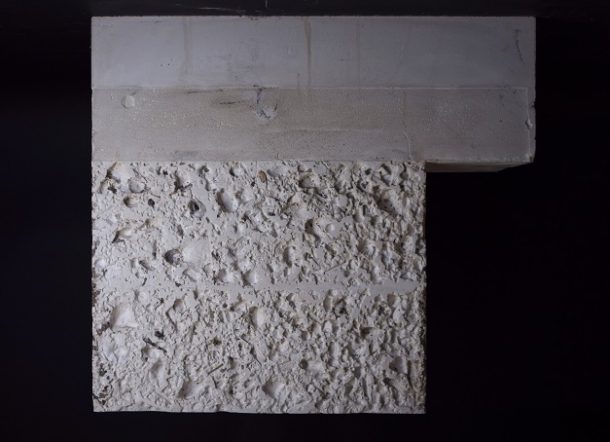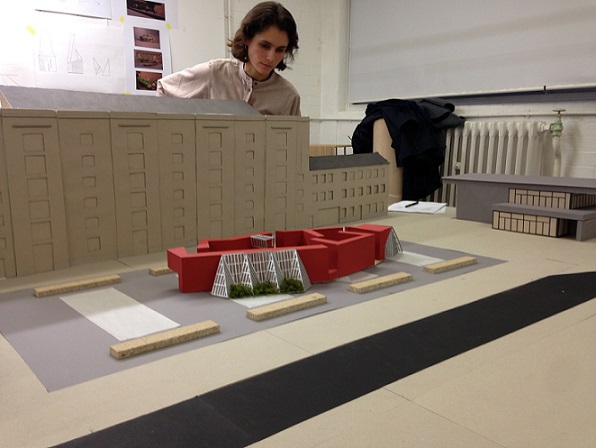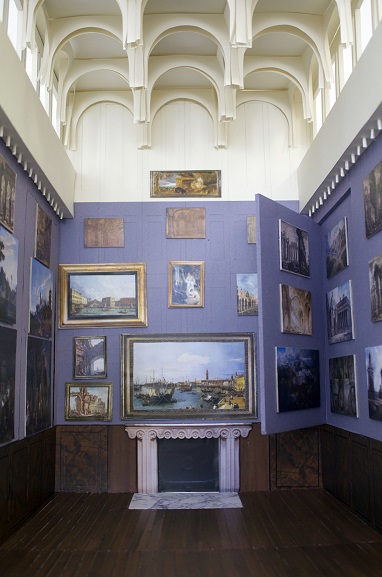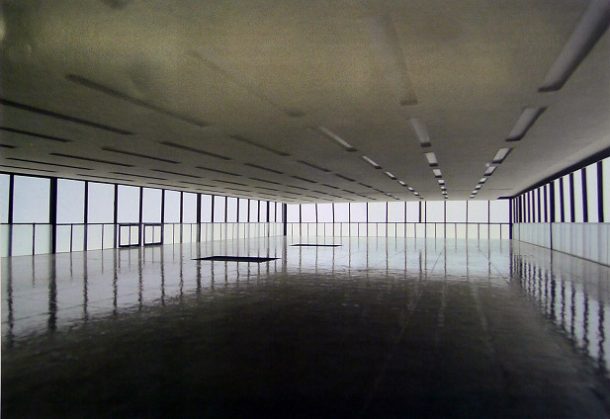Over 9 days from 28 May – 5 June, 12,000 participants took part in activities as part of the May half-term Family programme, inspired by the Engineering Season at the V&A, and most notably, Elytra, Filament Pavilion by Achim Menges; an amazing temporary structure inspired by beetles and fabricated by robots.
At first, the theme of Engineering did not seem an easy one to convey to families, but through research, planning and partnerships, each activity has delighted families and staff and introduced an exciting world of possibilities, where art and science meet. Please see below for an outline of four different activities created for families, all taking a different access point into engineering.
The Imagination Station activity and Pop-up Performances both took place outside in the John Madejski Garden, next to and under the pavilion.
Through winding and weaving, families were encouraged to explore, play and work together to add to a hexagonal scaffold frame structure, designed with sculptor Ian Tricker on the Imagination Station. Using a variety of fibres, rope and cord, families worked like the fabrication robot to fill spaces in and around the empty cell and tunnel components, criss-crossing lines and forming geometric shapes. They were encouraged to explore the cyclic movement of the robot and the social and environmental aspect of the work as they created another temporary structure in an urban green space. Just as the Elytra Filament Pavilion can be unwound with the same robotic process and the fibres put back on a spool, families were encouraged to create and then undo their work.
![The Imagination Station]()
The Imagination Station
This was one of the first activities created at the museum where families did not take something physical home to display on the fridge or wall. I wanted families to take home a physical memory of their time at the museum, explore the making process and enjoying the collaborative nature of this activity. Children played with other children and adults they didn’t know and worked together to create their own structure, that like the Elytra Pavilion, was temporary. This activity’s aim was an informal, social and intergenerational experience and this was achieved.
“The Imagination Station weaving of a mini canopy was my 7 year old daughter’s favourite activity in London this half-term. The simplicity made it fun from the minute she started. And we came back the next day to do it again.” Parent.
![The Imagination Station]()
The Imagination Station
The architect Achim Menges and his design team, said of the project: “The composite elements [of the installation] are produced by a robot, with the related elegant movement becoming an ever changing performance at the heart of the installation.”*
An obvious and immediate way to interpret this was through dance. Scanner’s Inc was commissioned to choreograph a new hip-hop participatory performance and workshop. They led 27 sessions, putting children and adults through their paces moving their bodies to the rhythm of the robot. In the middle of the week there was a live DJ and BSL interpretation. It was a wonderful experience to see so many people enjoying dance in the unique setting of the museum garden in the sunshine and light rain. It was not just families letting lose and exploring popping, locking and blocking, but people from the general public of all ages. This event animated the pavilion; fed the sensors installed into the pavilion to influence its evolving structure and provided a social place of shelter.
![Pop-up Performance]()
Pop-up Performance
“The dancers were fantastic and made it fun for all the family including the grandparents.” Adult.
“I found it was an amazing experience and I would do this over and over again.” Child.
Scanner’s Inc created a video of Dance of the Robot. Please view it here.
https://www.youtube.com/watch?v=tVUDmFhLfQs
![Pop-up Performance]()
Pop-up Performance
In the Learning Centre, families explored how to improve and add to the urban environments by importing images of natural phenomena in Digital Kids. The activity designed by the Digital Team was inspired by how properties of natural phenomena can inspire man-made design and touched on wider thinking about citizen and co-design, green cities and sustainable planning. Participants used Google Maps to obtain screen grabs of areas of interest to them (regional and international) and then pulled from a selection of images of insects, plants, trees, rain and grass and assembled these in Comic Life. Finished designs were regularly added to a world-wide interactive map and can be viewed here. https://www.flickr.com/photos/vandadigital/map
“First time at the V&A and will return I’m sure many times!! Great fun and kept the children happy. Learning is fun!!!” Family after activity.
![Digital Kids]()
Digital Kids
In the art studio, there was ten Make-it: House workshops over five days designed and led by a dedicated team of Arup engineers. In this workshop, families were introduced to building materials, techniques and the various jobs involved in building a house.
The workshop linked to the exhibition Engineering the World: Ove Arup and the Philosophy of Total Design, part of the V&A Engineering Season.
These workshops were available to children aged 5 + and their adults. Families explored materials and created their own model canopy structures. Everyone also took part in a role-playing game, where children took a design and construction role (client, architect, structural engineer, building services engineer and building contractor) to collaboratively build a small prefabricated house. This activity stimulated discussion, building an understanding of the different roles of those involved in constructing a building; highlighting the importance of working as a team and using a construction programme with time scales over which different professionals are involved.
At the end of each workshop families had met and worked with practicing engineers; came away with a greater knowledge about materials and their strengths and weaknesses; had an experience of building a model which they can take home and of working together with other families to create a house.
![Make-it House workshop with Arup]()
Make-it House workshop with Arup
‘Fantastic – great balance of info + theory and practice! Love the way they included the adults. Left my boys with a fascination for engineering!’ Family after workshop.
The engineers worked on this project voluntarily and the V&A is extremely grateful to them for their creativity and commitment to delivering workshops to families and supporting the learning programme at the museum.
Please visit the Arup Community Project pages for more information about this activity. http://arupcommunity.org/projects/m/make-it-house-family-workshops-at-the-va-museum
![Make-it House workshop with Arup]()
Make-it House workshop with Arup
In addition to these events outlined above, there were tours of the Europe galleries by families for families. An extension of the Europe Family – led Tour project (see previous blog posts for more information), and back-packs and trails available from the resource unit in the main entrance and the Learning centre level 3.
Engineering was also explored during the summer holidays. The V&A and Westway Trust, worked again with Scanner’s Inc who led workshops with participants from Pimento Supplementary School. Young people devised and performed their own robotic dance at Portobello Green and at in the V&A’s John Madejski Garden.
There was also a free and drop-in making activity created with the Arup team. Running for 31 days, families could create a temporary structure in the garden and explore the relationship between nature and design. 9500 people engaged in this extremely popular activity (double the number taking part in our summer activity last year). It generated a high level of engagement on social media, particularly on Twitter where a post received 62RT making it the second most retweeted tweet during the first two weeks of August. We are looking into opportunities to repeat this activity and share it with others and another blog entry will cover this in due course.
Harriet Curnow
Programme Manager, Learning
Notes:
Find out more about the Engineering Season here.
Elytra Filament Pavilion was created by Achim Menges with Moritz Dörstelmann (ICD University of Stuttgart / Achim Menges Architect), Jan Knippers (ITKE University of Stuttgart / Knippers Helbig Advanced Engineering), Thomas Auer (Transsolar Climate Engineering / TUM). Commissioned by the V&A
*Quote from Elytra Filament Pavilion Concept Design Notes April 2016
Dates and times of events:
May Half-Term
Part of the V&A Engineering Season
The Imagination Station
Saturday 28 May – Sunday 5 June. 10.30 – 17.00
Using fibre, create a mini canopy structure inspired by the Elytra Filament Pavilion in the John Madejski Garden.
Digital Kids
Saturday 28 May – Sunday 5 June. 10.30 – 17.00
Create your own incredible architecture using elements of nature, technology and the world around you.
Pop-up Performance
Saturday 28 May – Sunday 5 June. BSL interpretation on 1 June. 11.00, 13.00 & 15.00
Be immersed in the dance of the robot under an amazing and unusual architectural structure.
Suitable for all the family. BSL supported by The Lord Leonard and Lady Estelle Wolfson Foundation.
Make-it: House
Monday 30 May – Friday 3 June, 10.30 – 12.30 & 14.30 – 16.30
Work with an engineer from Arup to create a model of a new house.
Recommended for ages 5-12
£7.50 per child, children must be accompanied by an adult.


















































